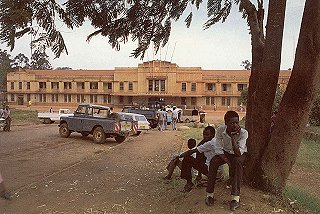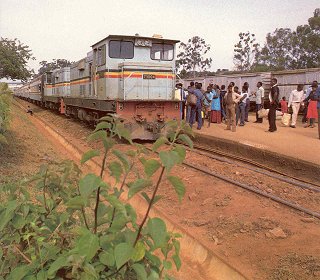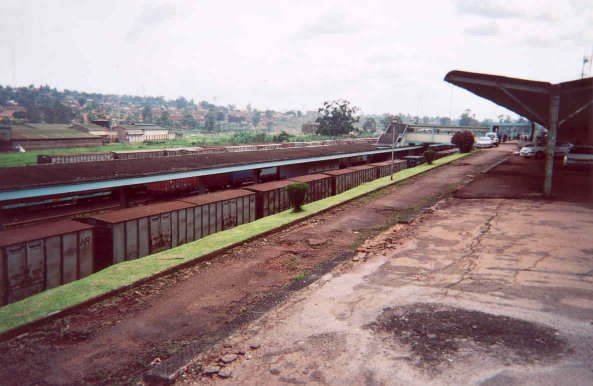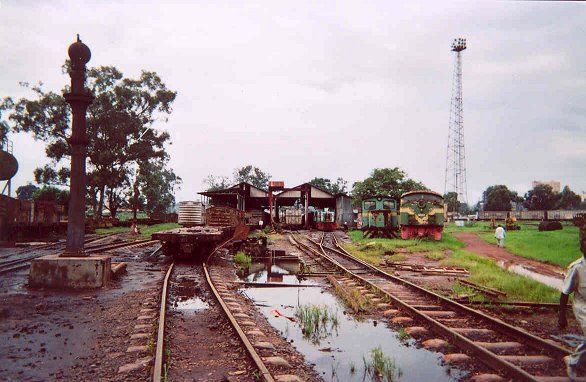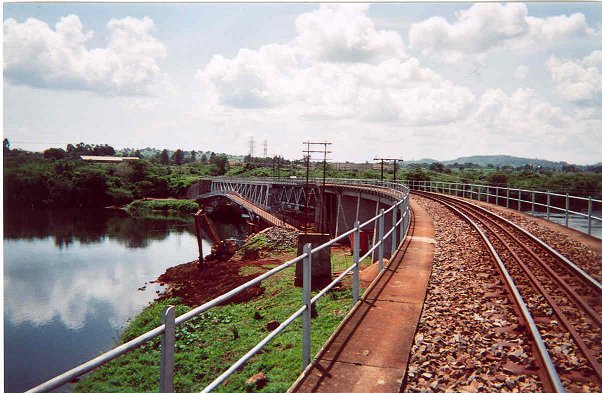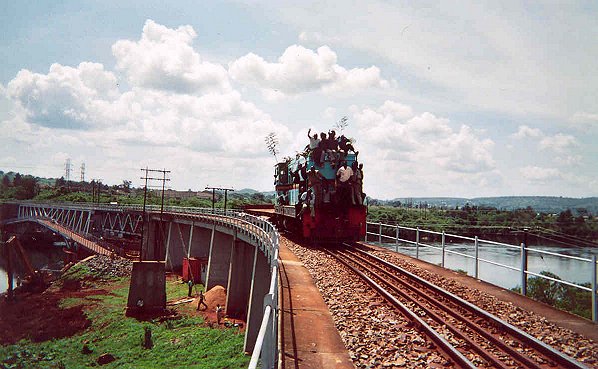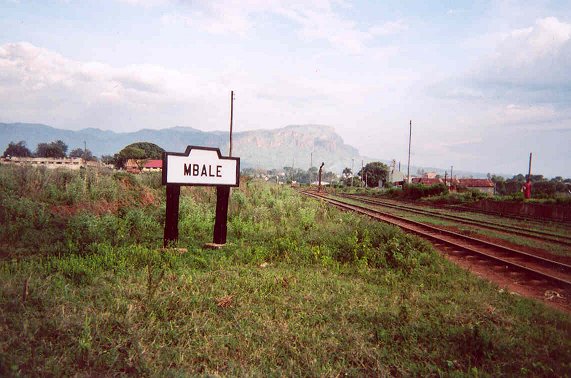|
|
|||||
|
|
Uganda
Railways Kampala to Tororo |
|
|||
| A road journey undertaken in 2004 recalling memories of East African Railways and Harbours | |||||
|
|
|
||||
|
Still the headquarters of Uganda Railways, the imposing facade of Kampala Railway station (left) as photographed in the late 1980s. Uganda Railways no longer operate passenger trains - the one shown (above right) is departing the low level platforms for Kasese, the terminal of the now abandoned Western Extension - PHOTOs - (left) Iain Mulligan, (above right) Mohamed Amin. The Tyers line clear equipment was all ripped out during the regime of Idi Amin, so now just a paper system is used. No timetable is in use, nor has there been for years. |
|||||
|
|
|||||
|
Mail Trains and passenger trains to and from Kasese used this single track high level platform, now a car park Freight wagons occupy the low level covered platforms in 2004 - PHOTO Iain Mulligan |
|||||
|
|
|||||
|
With a water column still standing sentinel, the engine sheds at Kampala with abandoned KR derelict diesel locomotives - PHOTO Iain Mulligan |
|||||
|
|
|||||
| The Nile Bridge at Jinja - the surprise was yet to come. Jinja is still a very important railway centre with wagons being mustered for despatch by to Kenya - by rail via Tororo, or by rail ferry to Kisumu. Another possible destination for the wagons is Mwanza in Tanzania. Vague about what decides a wagon to go by rail via TRO or by Lake via KSM or MWZ, but thought to be customer who decides. PHOTO Iain Mulligan. | |||||
|
|
|||||
| The photographer climbed up on to the Bridge and then walked back eastwards along the tracks. Once past the bridge itself, but still on the elevated approach, joy of joys, a "train" came over behind him. Not a real train, but the works train, and what that meant was a 62 Class decorated with palm leaves pulling a LSB, with a crowd of workers on their way from the stations to the west to a union meeting at Jinja. To the photographer's horror the sides of the LSB were open flat, and there was only just room for him between them and the railings. Anyway, great cheer from the passengers as they went past. PHOTO - Iain Mulligan | |||||
|
|
|||||
|
From Tororo there was a works train
on the line to Mbale where the station sign had recently been re-painted. At Tororo Station, it was just possible to make out where the station sign had said "for Soroti", and the foreman remembered that the short second platform had been called the "Soroti Bay". Tororo still has a cement factory which generates business, but it imports some of the cement from Bamburi. The Mbale line was due to re-open in February 2004 in response to customer demand - PHOTO Iain Mulligan |
|||||
| East African Railways | |||||
